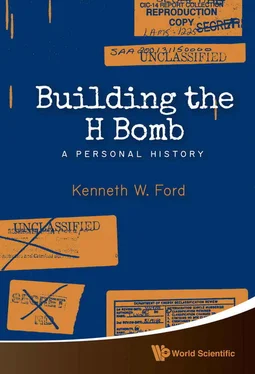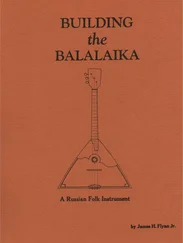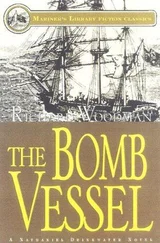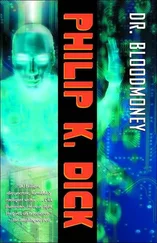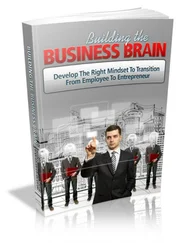At the time, Wheeler and another of his graduate students, David Hill (also from an earlier class), together with Niels Bohr, were working on a long paper devoted to what Wheeler had christened the “collective” model—a fusion of the liquid-droplet and independent-particle models [17]—intended to account for properties of nuclear fission as well as other nuclear properties. Wheeler offered Bohr co-authorship of the paper mostly as a courtesy. Here is the manner in which Bohr accepted co-authorship in a letter he wrote to Wheeler on July 4, 1949: {11} “The manuscript that you sent me came as a great surprise but, realizing that it more represents an account of the discussions we through the years have had about the theme rather than some original contribution of which I feel innocent, I do not only agree with the plan, but welcome it as a token of the continuation of our co-operation.” (Bohr’s reputation for indirection is well deserved.) By the time the paper was finally published in 1953, after various iterations, and after various delays occasioned by Bohr’s wish to review and delve more deeply, it was missing Bohr as a co-author. He had asked to be excused, since the work that was reported was indeed that of Wheeler and Hill. In the meantime, Wheeler got scooped on his explanation of nuclear deformation. In 1950, while Bohr dithered, James Rainwater, a Columbia University physicist, reported the same idea, {12} which earned him a Nobel Prize in 1975. [18]At the time of that prize, Rainwater wrote that the idea had come to him in late 1949. {13}
Remarkably, Wheeler never exhibited the least hostility toward Niels Bohr over this incident, saying merely: “Insights have a way of surfacing in different places at the same time.” {14} “I have often wondered,” he wrote in his autobiography, “whether Bohr… let fall some remark to his son, which, carried to Columbia, was sufficient to germinate the same idea about nuclear deformation there.” With a notable generosity of spirit, Wheeler went on: “It is equally likely that the flow was in the other direction. Perhaps, during my September visit, Bohr made some remark to me, based on his discussions with his son, that was just sufficient to set my mind working in the new direction on the train trip to Paris.” {15}

While Wheeler was happily engaged in thinking about electrons, positrons, atomic nuclei, and spacetime, and his wife was soaking up French culture, and his children were well embarked on learning a new language, the Soviet Union exploded its first atomic bomb. The explosion occurred on August 29, 1949, and was announced publicly by President Truman on September 23. This event exacerbated an already prevalent anticommunism in America, propelled the excesses of the House Un-American Activities Committee, undergirded the “McCarthy era” that was about to be launched by the junior Senator from Wisconsin, and fed a general fear that World War III might be around the corner. It markedly affected the attitude of John Wheeler, and also provided a rationale for Edward Teller to step up his demand that the Atomic Energy Commission and the Los Alamos Lab give higher priority to the development of the H bomb.
Some time that fall, probably in October, an overseas call came in for Wheeler on the wall phone at Pension Domecq in Paris, where he and his family were living. It was from Henry (Harry) Smyth, who had been Wheeler’s department chair at Princeton and was now an Atomic Energy Commissioner in Washington. {16} , [19]The call came just at dinner time. While his fellow residents watched and listened, Wheeler tried to discuss A bombs and H bombs without mentioning either. Smyth, at his end, was being similarly discreet, even without an audience. His message: Would Wheeler consider cutting short his leave in order to go to Los Alamos to participate in an accelerated effort to develop a hydrogen bomb? Wheeler didn’t say no. He said maybe. {17} It’s not much of a stretch to assume that this call came at the instigation of Edward Teller. Teller, even before the news of the Soviet A bomb, had taken a leave of absence from the University of Chicago to spend the 1949-1950 year at Los Alamos (a year that was later extended). The news of “Joe 1” (as the first Soviet A bomb came to be known) no doubt amplified his zeal to intensify the U. S. effort to develop an H bomb. Without question, he would have considered Wheeler as an ideal colleague to join the effort (as well as other notable physicists such as Enrico Fermi and Hans Bethe).
Teller directly contacted Wheeler by telegram on January 11, 1950. I have to guess that this was to put on paper one or more previous telephoned invitations. The telegram read:
WOULD YOU CONSIDER COMING TO LOS ALAMOS IN THE IMMEDIATE FUTURE AND STAY AT LEAST UNTIL OCTOBER FIRST IF POSSIBLE LONGER YOU ARE URGENTLY NEEDED WIRE COLLECT WHAT CONSIDERATIONS WOULD INDUCE YOU TO COME. {18}
(Whether Teller was authorized to offer employment at the lab is questionable, but hardly important. He could be sure that lab officials would back him up.) Wheeler, in his autobiography, describes his “inner struggle,” saying that he agonized over the decision with his wife Janette, and was so “visibly troubled” that his children later remembered it. {19} Teller, in his memoirs, doesn’t mention the telegram or any phone calls that fall or winter, but describes calling Wheeler some time after January 31, 1950. {20} On that date, President Truman had issued a statement saying “I have directed the Atomic Energy Commission to continue its work on all forms of atomic weapons, including the so called hydrogen or superbomb” {21} , [20]—a statement that was later interpreted to be Truman’s authorization of a “crash program” to build an H bomb. {22} According to Teller, Wheeler responded to the entreaty by saying, “Here you are supporting one end of the project and President Truman is supporting the other end, but there is nobody supporting the clothesline in the middle. I had better take the next plane.” That does, in fact, sound like the kind of thing Wheeler might say, and is consistent with Wheeler’s own recollection that by late January 1950 ( before Truman’s statement about the U.S. weapons program) he had made up his mind. In February he did depart for America, but by ship, not plane. {23}
As Wheeler recalled it, Niels Bohr gave him the final impetus to join the H-bomb work. In January 1950 Wheeler made the second visit of his sabbatical year to Copenhagen (the first having been in September), and there discussed his ambivalence. Over breakfast one morning, according to Wheeler, Bohr said, “Do you imagine for one moment that Europe would now be free of Soviet control if it were not for the Western atomic bomb?” {24} Wheeler’s mind was made up. When he was back in Paris at the end of the month, his wife Janette concurred in his decision.
Thanks to the informality of the times, Wheeler could almost “take the next plane” despite having no formal job offer, no agreed-on salary, no information about travel reimbursement, and no security clearance for weapons work (although he must have had some level of clearance for his membership on the Reactor Safeguards Committee). He and his wife decided that she and the children should remain in Paris until the end of the school year (they actually cut it shorter), and that he should go ahead alone as soon as possible to the mesas of New Mexico. He encouraged his student John Toll, who could pursue his doctoral research as well in Paris as anywhere else, to stay behind with Janette and the children, which Toll gladly did. Toll had already traveled with Janette and the children as they drove in September from St Jean de Luz to Paris, and was treated as a member of the family.
Читать дальше
